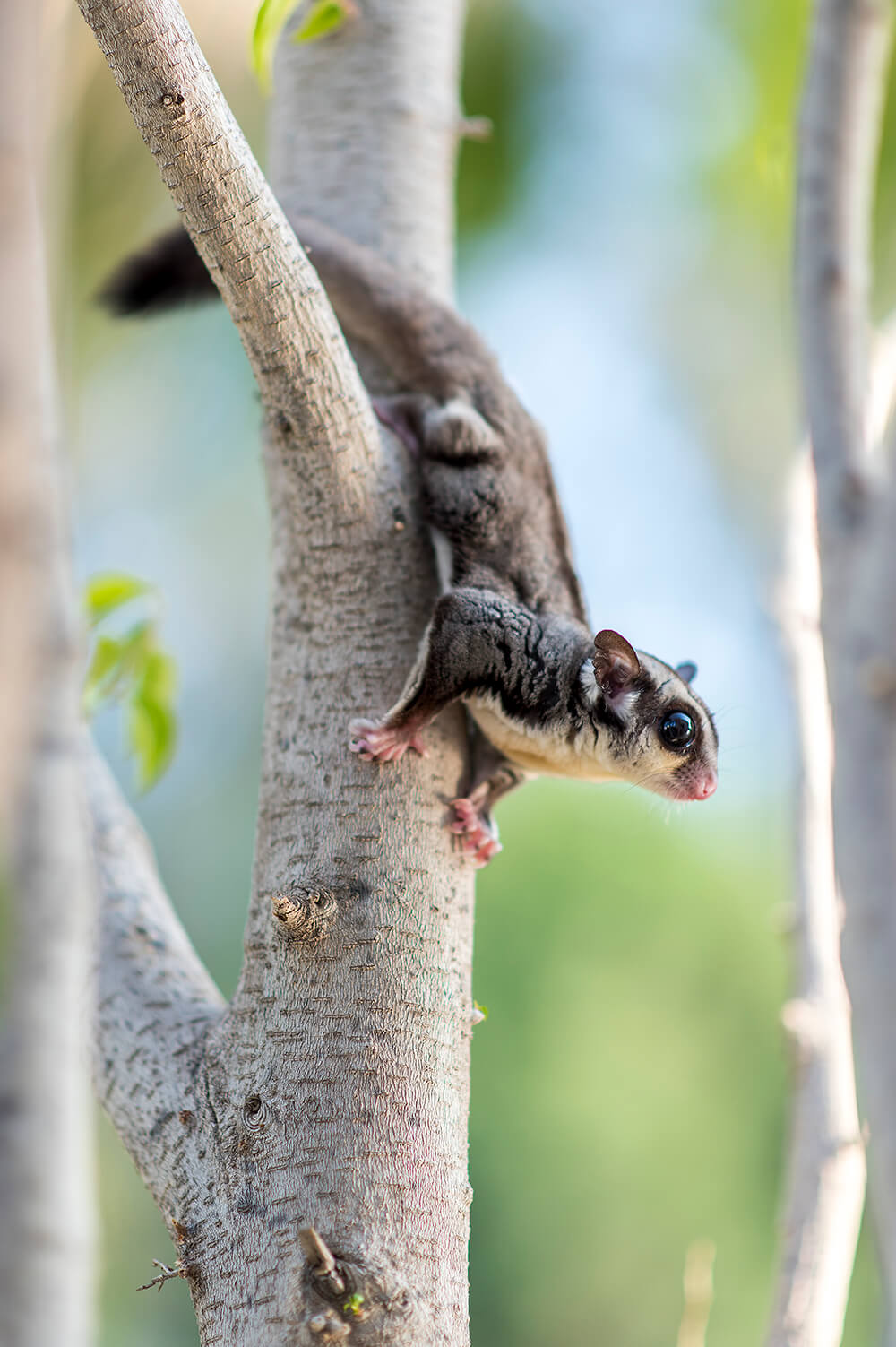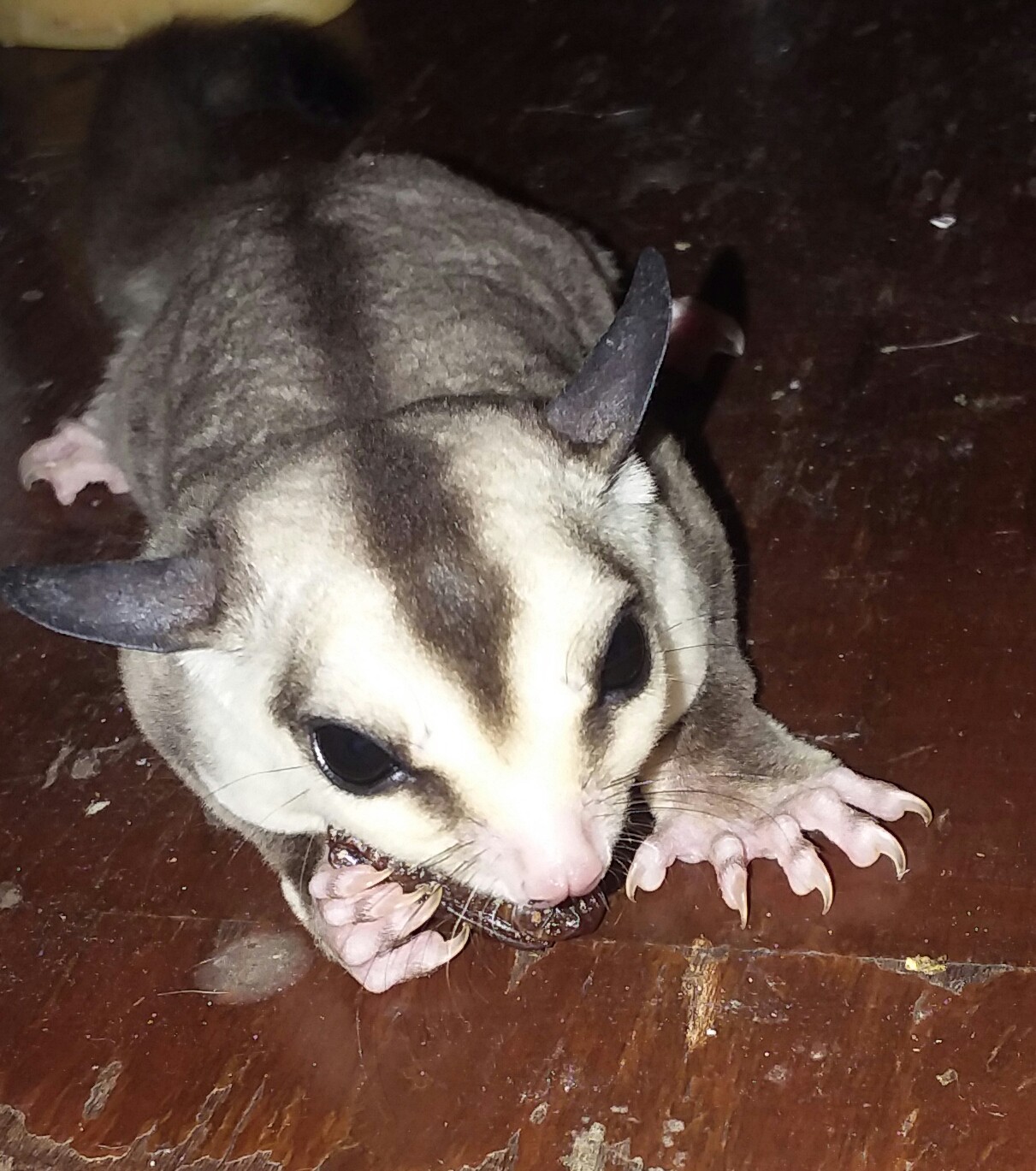
Fruits that should be avoided include: grapes, bananas, apples, pears and any canned fruit. Healthy fruits, such as, berries, melon, kiwi, papaya and mango should be offered. Fresh fruits should comprise the other 25% of your glider’s diet. Captive diet: Several commercial sugar glider diets are available and should encompass at least 75% of the daily dietary intake.

Most sugar gliders will learn to drink from sipper bottles.

Water: Water should be available at all times and changed daily. A small tent that can be put up in a room is a great way to offer safe access to exercise this will keep them from getting lost/loose in the house. Constant supervision is highly recommended when out of the cage. Branches, a plastic wheel designed for Sugar Gliders with a closed bottom and some bird toys may be used to promote an active lifestyle. Exercise: Exercise is extremely important for the longterm physical and mental health of your glider. Small pieces of fleece cut into small squares can be used in the nest box/pouch and should be changed every couple days. Bedding: Paper based bedding is preferred for the cage floor, as cedar and pine chips can lead to respiratory issues. The ideal temperature range for sugar gliders is between 75-80 F. A nest box or pouch should be provided high in the cage to allow for rest during the day. Environment: The cage should provide adequate climbing branches to allow for proper exercise and toys for enrichment. Several different food and water bowls/bottles should be placed throughout the cage. Wire spacing should be no larger than 1.0 X 2.5 cm wide. Cages should be made of wire mesh to allow for proper ventilation. Minimum cage size for 1-2 adult gliders is 36 X 24 X 48 inches. Caging: Due to their extremely active nature, sugar gliders should have the largest cage possible. The average life span of a glider with a proper diet and adequate care is 8-12 years. The average weight of an adult Sugar Glider is 85-140 grams. Joeys are weaned at about 3-4 months old, and they become sexually mature between 8-14 months old. Female gliders are pregnant for a total of 16 days before giving birth. The female glider, along with other marsupials, carry their babies, called joeys, in a pouch on the abdomen.

The pygmy Glider is typically active at night. The marvelous creature can glide up to 25 meters. This increases the surface tension of the creature and also offers it with outstanding grip. Its fur covered toes holds many sweat glands, which produce a lot of moisture. Its tail can act as a rudder and help navigate its decent and also assists in decelerating. And as we know surface area improves lift and drag performance of the body as a whole. It’s membrane and flattened tail increase the body surface.

The feather tail initiate it’s flight by first launching itself with it’s legs extended.


 0 kommentar(er)
0 kommentar(er)
